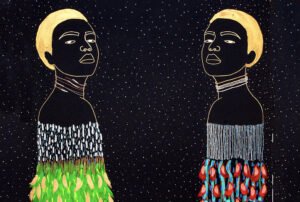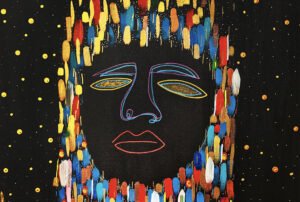
This is the third article in NPQ’s series titled Building Power, Fighting Displacement: Stories from Asian Pacific America, coproduced with the National Coalition for Asian Pacific American Community Development (National CAPACD). Authors in this series highlight stories of comprehensive community development in Asian American and Pacific Islander communities across the United States.
What does gentrification look like? For residents of the Boston community of Dorchester, the question is far from theoretical, with luxury apartments that look nothing like the neighborhood rapidly being developed. As the Boston Globe has reported, one billionaire investor, Gerald Chan, bought up significant sections of our neighborhood, including a 4.7-acre site near the Savin Hill T station, a 362-unit apartment building, and a two-acre commercial site.
A few years ago, a column in a neighborhood publication, the Dorchester Reporter, posed the situation as follows: “Displacement is ripping Dorchester apart.” And it’s not hyperbole. We’ve seen the impact of foreclosures and rising rents, forcing out many longtime working-class residents and threatening the multicultural fabric of our community. This is why the resident-led community group Dorchester Not for Sale (DN4S) was formed.
In a segregated city like ours, Dorchester remains a vibrant multiracial working-class neighborhood. In recent years, through D4NS, we have mobilized our community across race and class and succeeded in bringing a community that had long been ignored in city planning conversations to the table.
We have changed the conversation…from a framework of “improvement” and “revitalization” to the question of preserving a vibrant working-class community.There is still a lot to do. This includes continuing to press for changes in policy in terms of inclusionary development, community involvement in developing neighborhood plans, and developing community land through land trusts that are community owned. Through all this, we are committed to keeping our corner of the city as a space where our community can work together, build together, and thrive.
Investing in Resident Leadership
The group I direct, the Asian American Resource Workshop (AARW), actively supports and provides infrastructure for the DN4S resident-led project. AARW is a Pan-Asian community organization founded in 1979 that moved from Boston’s Chinatown district to Dorchester to support Vietnamese American leadership about 10 years ago. Sensing the threat to Boston’s Vietnamese community, AARW decided, along with local community members, to invest in supporting the next generation of grassroots leadership in Dorchester.
The Vietnamese community members we work with have faced displacement in many forms. Being resettled to disinvested neighborhoods like Dorchester in the 1980s happened after war and imperialism forced them from their homes. Now, years after building home, cultural community, and working with other working-class communities, they are again facing displacement due to rising housing costs, evictions, and the pressures of development.
The work in the Vietnamese community, coupled with the readiness to build a multiracial coalition, led to the creation of DN4S. And the good news is that organizing is making a difference. Fundamentally, we have changed the conversation in our neighborhood from a framework of “improvement” and “revitalization” to the question of preserving a vibrant working-class community.
We have also seen complementary strategies emerge like community land trusts buying property to steward the land for community residents. Through the Greater Boston Community Land Trust, three buildings were acquired in 2021 that provide 12 units of housing, including a six-family building that has been in disrepair for years. The building had been flipped between owners in the past few years, driving up the price and threatening to push out the residents from the building. The struggle over 6 Humphreys Place alongside City Life/Vida Urbana has become a symbol of community pushing back against gentrification. The building’s acquisition was a major victory. Of course, we know that these victories are just a start.
The community campaign to promote development without displacement in Dorchester is ongoing. And it is to this theme we now turn.
Facing the Threat of Luxury Apartment Development
The abbreviation “Dot” is often used by locals to refer to someone or something from Dorchester. But AARW staff and community members began to hear rumblings about a project called “Dot Block” in 2016, which clearly came from outside the neighborhood. The potential impact of this development was obvious. The creation of luxury housing threatened to drive neighborhood effects that would raise rents for residents throughout Dorchester.
AARW began to connect with other communities in the neighborhood, asking them if they had heard about this project. Next, a group of neighborhood residents convened conversations. This involved inviting organizations and residents to the table to figure out what was going on in our neighborhood and what was already happening around the project.
We mobilized English-speaking, Vietnamese-speaking, and Cape Verdean Creole-speaking residents to push for access to the process and save our neighborhood.
What we discovered is that part of the neighborhood was set to be rezoned and that an international billionaire, Gerald Chan, had bought the land to develop “Dot Block.” seemed to be part of a larger developer plan to gentrify Dorchester, especially the section of the neighborhood known as Fields Corner. We sense this because it is a pattern we had seen play out in other Boston neighborhoods such as the South End, a pattern that led the First National Bank of Cleveland in 2014 to label Boston the “fastest-gentrifying” city in the country. Dorchester has long been a working-class multiracial community, but has long been at risk of gentrification, situated as it is on the “other side” of the what’s known as the Brain Train—that is, the Red Line of the T that connects Dorchester with the Massachusetts Institute of Technology and Harvard.
Through conversations with organizations and residents, we assessed that people in our neighborhood needed to organize a grassroots movement to advocate for development without displacement. Convening a multiracial, multigenerational planning team, AARW, New England United for Justice (NEU4J), and other local organizations came together to help form DN4S.
DN4S began door knocking, distributing flyers, and engaging residents in English, Vietnamese, and Cape Verdean Creole. As we learned about Dot Block and the broader city planning process called PLAN: Glover’s Corner, we started attending meetings of the Boston Planning and Development Agency, the city’s leading community planning department.
Community members began by pushing for simple things to facilitate attendance at these meetings, like childcare, food, and interpretation. We quickly learned that these were bigger asks than we thought—and so community members organized a significant campaign to simply improve the meetings’ accessibility. Through these demands, we mobilized English-speaking, Vietnamese-speaking, and Cape Verdean Creole-speaking residents to push for access to the process and save our neighborhood.
Building the Community Campaign
For four years, from 2016 until 2020—when the pandemic altered our work substantially—DN4S focused on building out its own structure, connecting to organizations while retaining an ability to function autonomously, and leading community engagement sessions to shape demands around both Dot Block and the broader development of Glover’s Corner.
Sign up for our free newsletters
Subscribe to NPQ's newsletters to have our top stories delivered directly to your inbox.
By signing up, you agree to our privacy policy and terms of use, and to receive messages from NPQ and our partners.
After winning some improvements on community process, we began to learn together about city process, standards for affordability, city and state policy, and what we could fight for. We developed community demands around affordability of the development, as well as standards for the area to be rezoned overall.
We explored good jobs standards and how to preserve existing triple-deckers (three-story buildings in which each floor serves as a separate family’s home) in our neighborhood with demands for funding for community land trusts and community development corporations to take housing off the speculative market. We organized, shutdown meetings, and continued with the crux of our work, which not only involved hosting monthly community dinners to build our base but also dogged advocacy, showing up at city hearings, political action, and working with partners to develop long-term solutions, like community land trust, that would create community-owned land that developers cannot touch.
We fought hard, negotiated, and told our stories. With Dot Block, we made modest incremental gains; we won a small increase in the percentage of affordable units in Dot Block (15 percent instead of the city’s mandatory minimum of 13 percent).
We always knew that beyond Dot Block, fundamentally what mattered was the future of our neighborhood. Even though we didn’t win much on this project, our intervention helped alter the conversation about who speaks for the neighborhood, what concerns need to be addressed in development projects, and what it means to build a multiracial organizing space.
Previously, as with Dot Block, we had to research to find out about plans at the Boston Planning and Development Agency; they were not public. Now when developers come to the neighborhood, they must come prepared to discuss affordability and racial equity at community meetings, and they know they cannot assume they’ll get away with city minimums. City government under Michelle Wu—who was elected mayor in 2021 on a platform calling for stricter limits on development—has also changed its tune somewhat, pressing developers to both support more affordable housing and increase their community engagement efforts.
The Pandemic’s Unexpected Outcomes
During the pandemic, we pivoted our work to show up for our neighborhood, delivering groceries to hundreds of people, helping people apply for and receive cash assistance, and connecting folks to rental assistance. Through this, we were able to build bridges with organizations and groups, both in philanthropy and in Boston public agencies which had historically dismissed us as “too confrontational.” Our community work showed them that we have our ear to the ground and a pulse on neighborhood issues.
Our community was struggling, but we showed public officials what grassroots leadership development and power looks like by creating weekly food distribution and connecting resources from more established nonprofits to individuals on the ground. Doing this work reinforced who our people are and why we are in the fight to keep our neighborhood the diverse, vibrant, working-class community it is. The pandemic unveiled so many inequities in our city, state, and country and galvanized action to address them. Our work to make sure new development does not push out our community members is part of the same struggle.
We are pushing for funds to take land off the speculative market and increase the number of units in land trusts…to maintain community ownership.
Community Land Trusts as Key Tool
While we are fighting thousands of new luxury units coming into the neighborhood (including “phase 2” of Dot Block), we are achieving some important wins. The Greater Boston Neighborhood Community Land Trust Network, which is backed by the longstanding Dudley Street Neighborhood Initiative based in the nearby Roxbury neighborhood and with which we are aligned, was formed to buy buildings that were in foreclosure to keep the tenants in their homes. Since then, the land trust has evolved and has added scattered sites across Dorchester, acquiring small three- and six-unit buildings, creating community-owned housing for residents. This is critical work because it is taking land off the speculative market and preserving units that were considered “naturally affordable”—with previously relatively low, unsubsidized rates—before outside development began pushing up rents.
Indeed, in all our work, we are pushing for funds to take land off the speculative market and increase the number of units in land trusts—this is a way to maintain community ownership and prevent displacement even as new development occurs. This is what we mean by pursuing “development without displacement.” Land trusts, especially through community ownership of scattered sites and smaller buildings, are a key tool that can contain displacement and gentrification.
A New Mayor’s Promise
As noted above, in 2021, the city elected Michelle Wu as mayor. She voiced many of the lines we had been emphasizing for years: the need for community process and planning and the need for increased affordability. With Wu’s election, we were optimistic that development in Boston would change. Unfortunately, while there have been small wins, as noted above, so far old patterns persist. One major obstacle to Wu taking more extensive action has been the power of the real estate development lobby, which remains entrenched in quasi-independent city agencies, most notably the Boston Planning Development Authority.
One shortfall has been the lack of action on community-based planning and development. Community activists wanted to alter the Glover’s Corner plan so that they could truly create a comprehensive and inclusive community plan that allows development while meeting community needs. But no plan has been finalized, and the commitment to public land for public good has not been codified. Meanwhile, more medium- and large-sized developments continue to be proposed across the neighborhood with only limited emphasis on planning for affordability and climate resiliency.
We have had some victories—increasing housing affordability requirements in projects and creating rules for developers to inform community organizations in advance of their plans. We are also beginning to see the development of community-owned housing in Dorchester. It is no longer the case that developers can just come in and build. Now, they must inform community organizations in advance and negotiate agreements. But the real estate development industry remains very powerful in Boston and victories, when they do occur, require considerable community mobilization and effort. The struggle for community planning to lead the development process continues.
Preserving a Multiracial Dorchester
The central question remains: What kind of neighborhood will Dorchester be?
We know that organizing a multiracial working-class base is the only way to ensure that the community remains a home for working-class people and does not convert into a bedroom community for professors and others commuting on the Red Line to Cambridge.
Preserving our vision means advocating for tenant protections like rent control, and most importantly, pushing for real community planning that centers the needs of those most impacted in shaping the development that comes to the neighborhood. It also requires supporting community ownership of land through community land trusts and other means, so we can truly control our destiny as a community.










